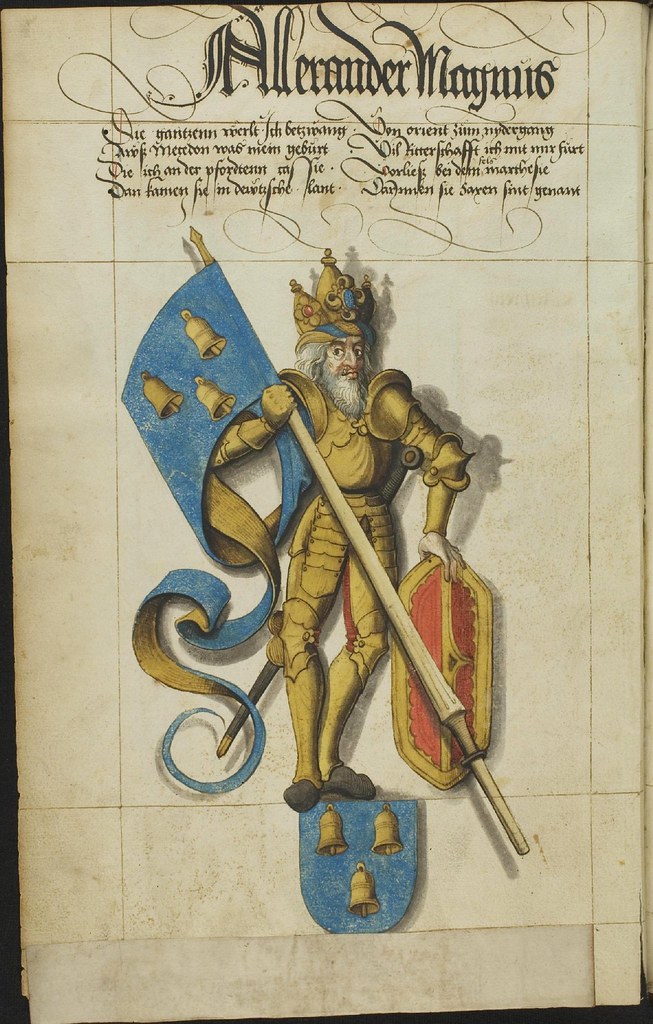
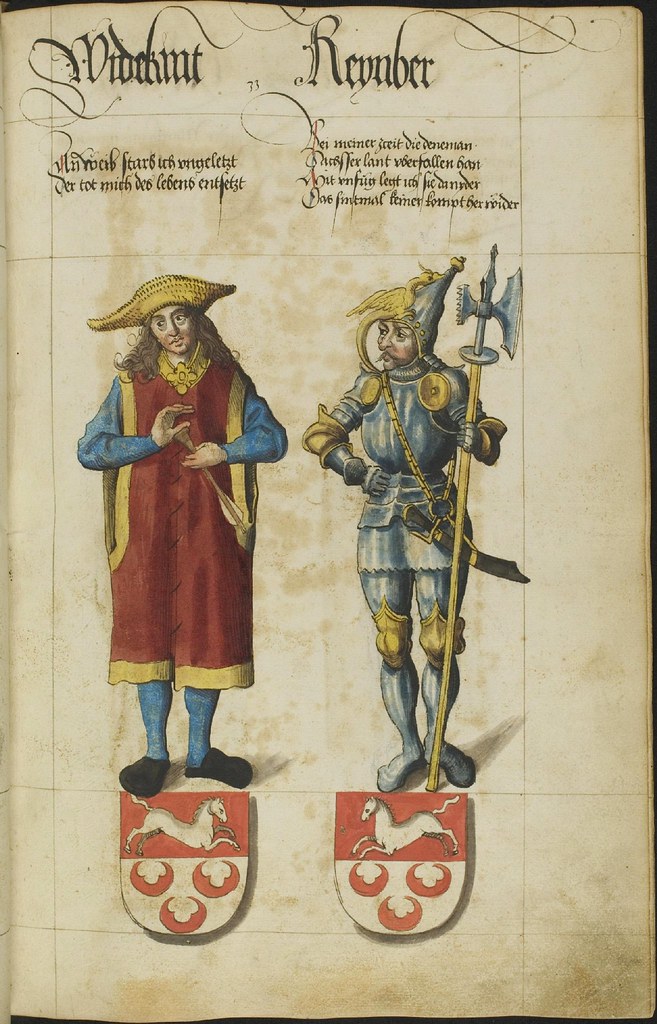
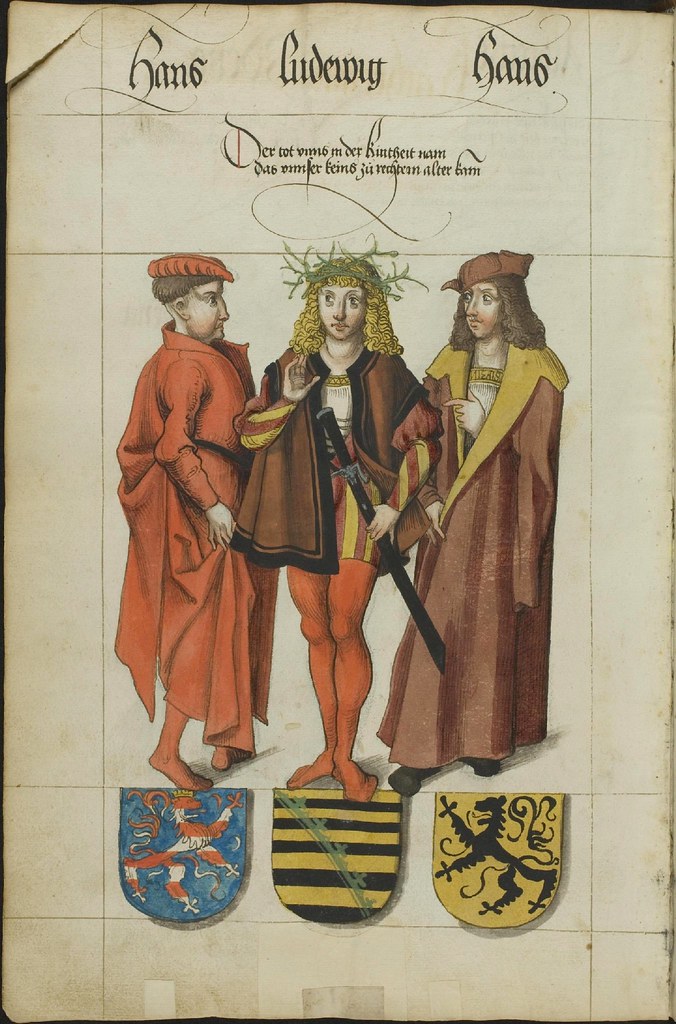

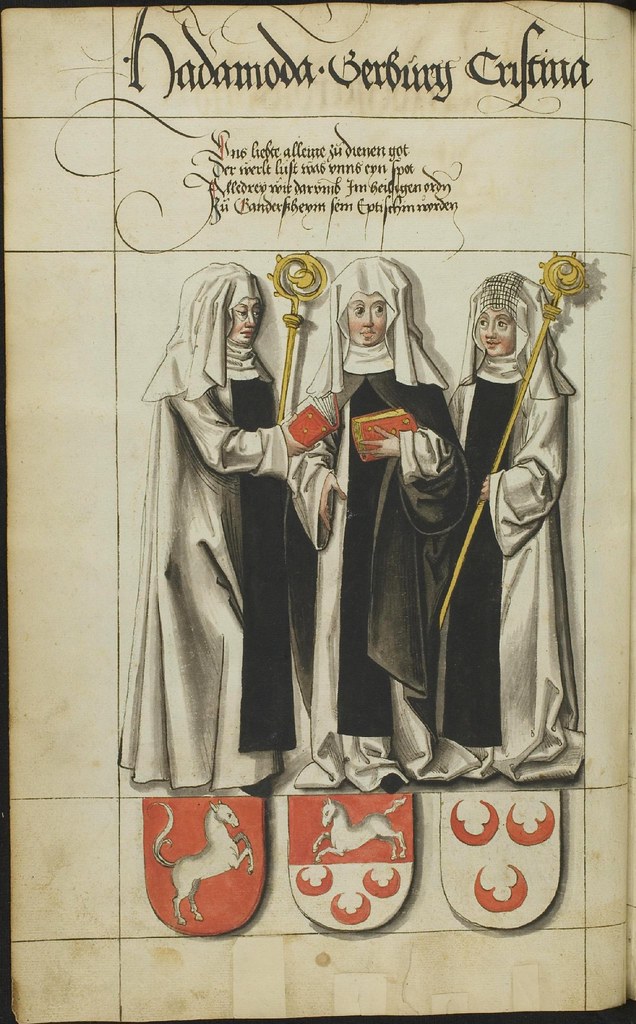
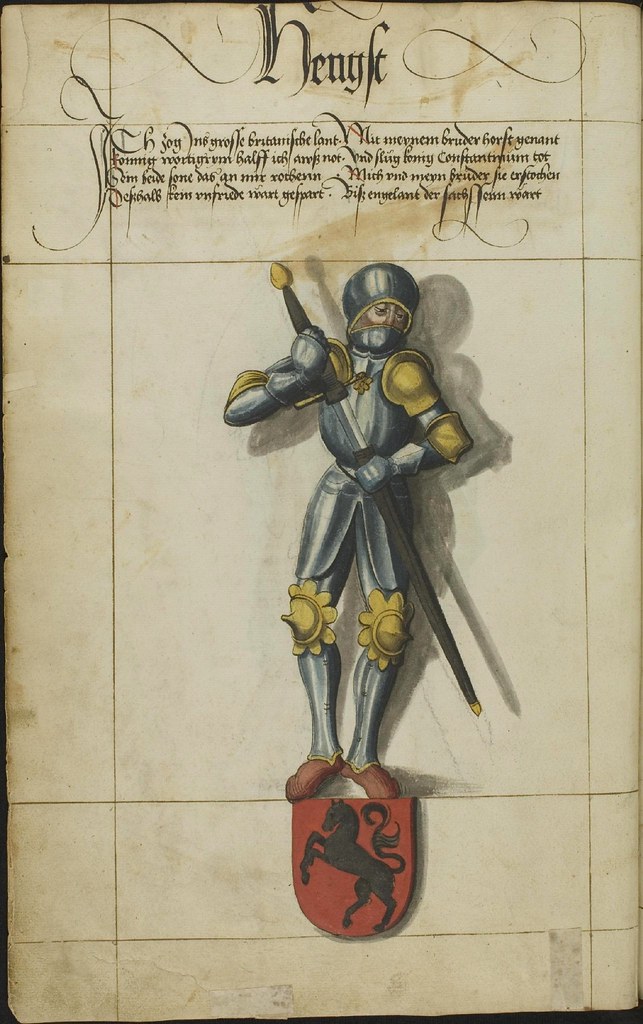
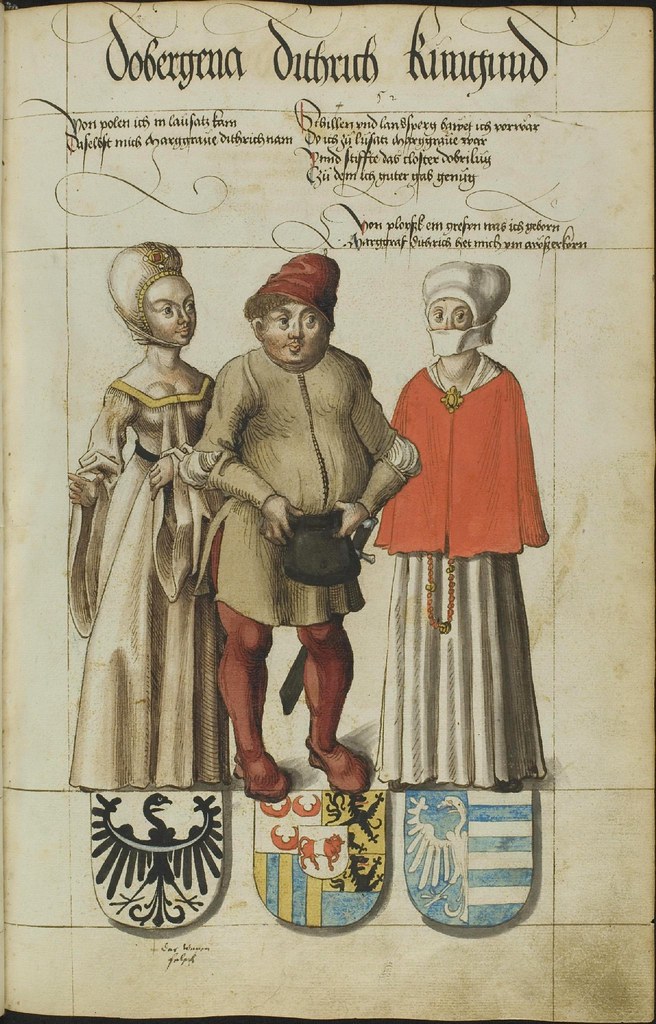
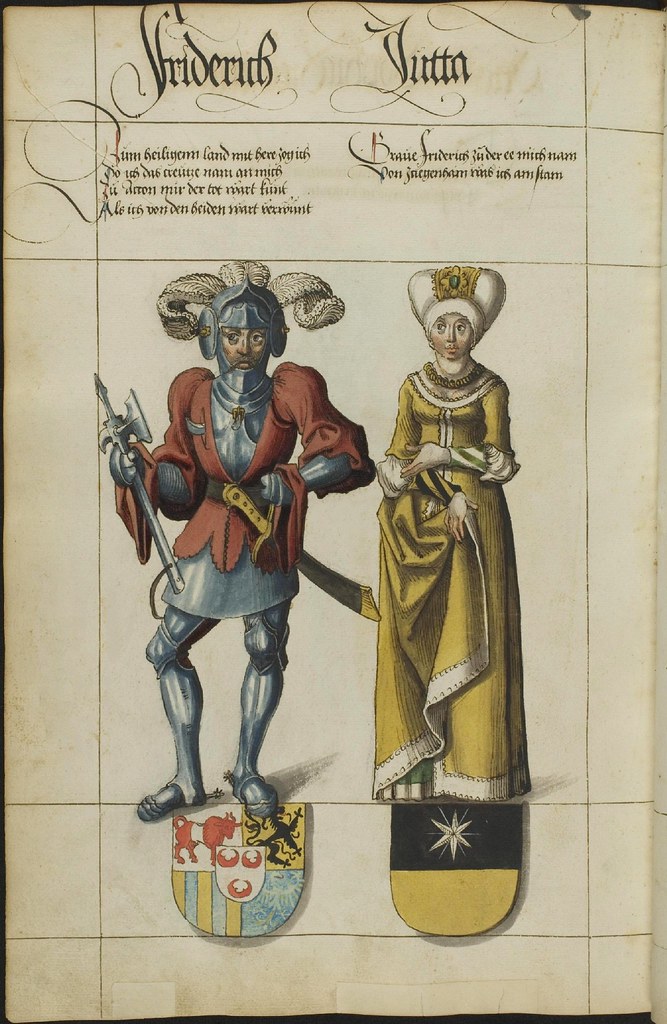
[all of these images have been background cleaned to one degree or another and the
colour saturation has been slightly boosted -- click through to see much larger versions]
colour saturation has been slightly boosted -- click through to see much larger versions]
'Das Sächsische Stammbuch' [subtitled as:] 'Sammlung von Bildnissen sächsischer Fürsten, mit gereimtem Text; aus der Zeit von 1500 - 1546' is available online from the State University Library in Dresden (click the book icon for thumbnail pages).
The Saxon pedigree book OR Collection of Saxon Prince portraits with rhyming verse from 1500 to 1546, contains sketches of some two hundred members of he nobility from the German state of Saxony, accompanied by the family or town crests and a snatch of descriptive text.
This is a significant manuscript for a couple of reasons. The charming sketches often present the people in informal poses, as though they are chatting with their friends. That lends the work a certain authenticity: it's more likely that the subjects have been drawn faithfully as opposed to the work being overly embellished to curry favour with the royal court for instance. So beyond tracking the nobility of the period, the sketch album offers a useful resource for historical costume research and particularly so because the figures are presented in full, half and three-quarter views.
What really marks this portrait and coats of arms series as a work of considerable distinction, however, is the belief that the figures were painted by none other than Lucas Cranach the Elder (d. 1553). Along with Albrecht Dürer, Hans Burgkmair, Albrecht Altdorfer and Hans Holbein, Cranach was one of the great German artists of the northern Renaissance during the first half of the 16th century.
"He was court painter to the Electors of Saxony for most of his career, and is known for his portraits, both of German princes and those of the leaders of the Protestant Reformation, whose cause he embraced with enthusiasm, becoming a close friend of Martin Luther. He also painted religious subjects, first in the Catholic tradition, and later trying to find new ways of conveying Lutheran religious concerns in art. He continued throughout his career to paint nude subjects drawn from mythology and religion." [W]
Very interesting. I enjoyed the sketches.
ReplyDeleteFascinating stuff and great to see the costumes of the day so beautifully illustrated too.
ReplyDelete